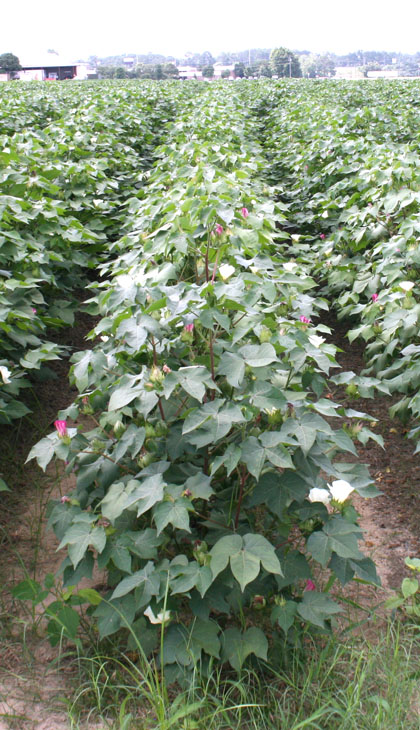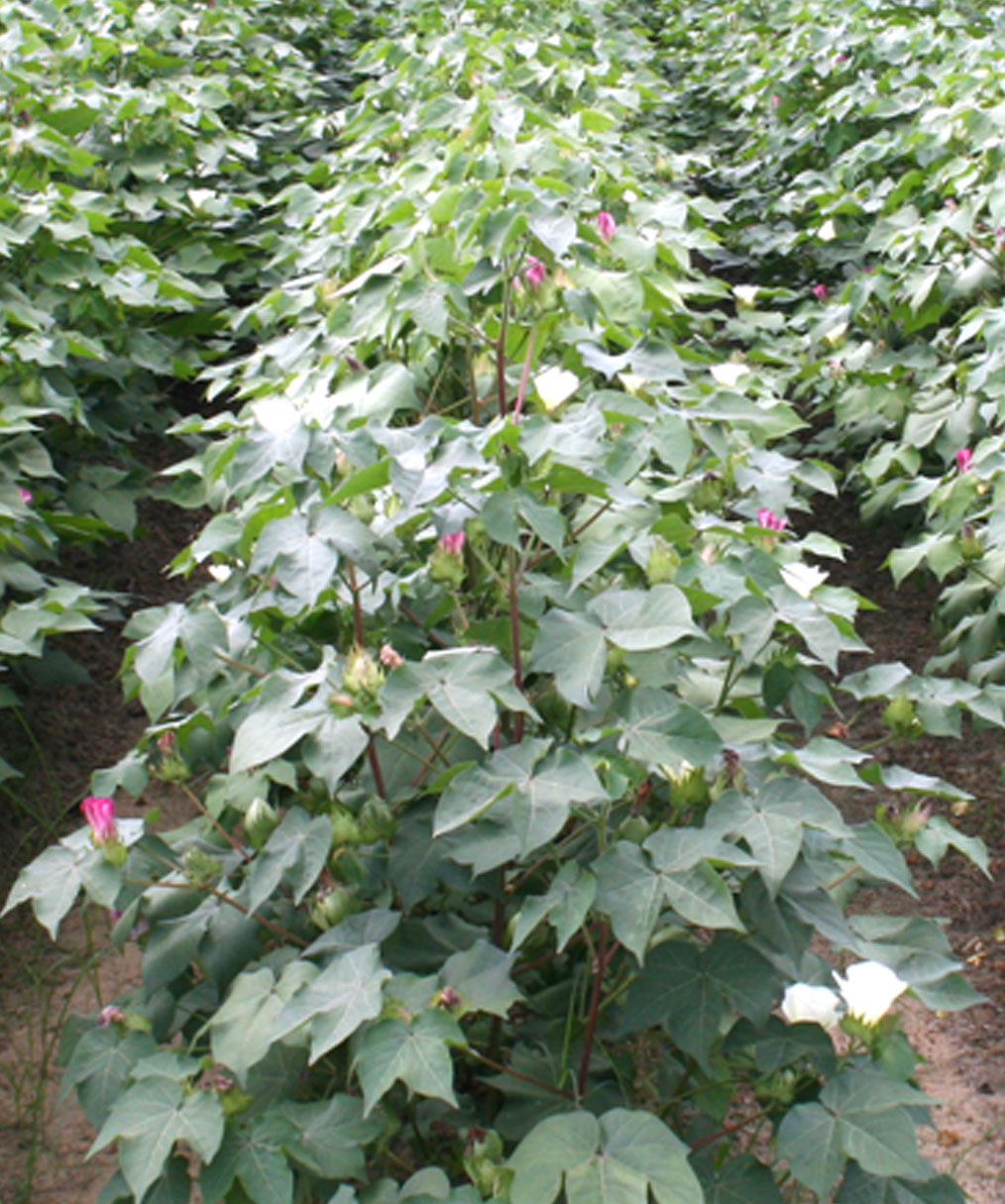The deluge of rainfall this summer made a splash with some cotton farmers but created a tidal wave of challenges that some growers are still fighting.
While the increased moisture sparked growth in some cotton plants, it stunted growth in other fields and made fields almost impossible for tractors and equipment to pass through.
“There a lot of folks that are struggling to get in the field to get any work done. There’s some cotton that hasn’t been side dressed yet. We’re a little bit behind on that,” said Guy Collins, a University of Georgia Cooperative Extension cotton agronomist. “In places, there’s cotton that’s drowning. There’s a lot of water-logged cotton, not really taking off like we had hoped.”
Unlike recent years when the cotton crop endured long periods of drought, it’s been common this year for fields around the state to get several days of rain. According to the UGA’s Georgia Automated Environmental Monitoring Network, the Bowen Farm on the UGA Tifton campus recorded 15.17 inches May 1-July 21. In comparison, the rainfall accumulated registered just 8.16 inches in 2012 and only 4.70 inches in 2011. During that same timeframe on the UGA campus in Griffin, 18.94 inches were recorded in 2013, 9.42 in 2012 and only 7.66 in 2011.
“Right now, I’ve got cotton in the fourth week in bloom, and there’s some out there that’s very young,” Collins said. “You’ve kind of got a broad spectrum of crops and it ranges in terms of when they were planted.”
Collins added that during this time of year cotton farmers, who plant early, are normally either irrigating, which hasn’t been necessary, or applying plant growth regulator treatments along with insect management.
“That’s a challenge we’re running into. Farmers can’t (apply treatments) when they normally would so they’re a little bit behind schedule,” Collins said.
For growers, the challenge may also be attributed to their particular field. For those who farm on low-lying fields, the problem is the ground doesn’t drain well. Water is left standing in the fields, which drowns the cotton. Farmers with fields that slope have to deal with washes, making it difficult for equipment to travel.
More and more farmers have also resorted to hiring airplane pilots to apply chemicals or fertilizer on their cotton. It’s an added expense but one that’s probably “necessary,” for some growers, Collins said.
Though farmers have encountered obstacles with the soggy conditions, Collins insists circumstances could be worse.
“If we were in a drought, it would be a lot worse than what we have now,” he said. “However, a short-lived, slightly drier spell wouldn’t hurt us right now, but we don’t need rains to subside completely.”
For more information about the UGA’s research on cotton, see www.ugacotton.com/.








